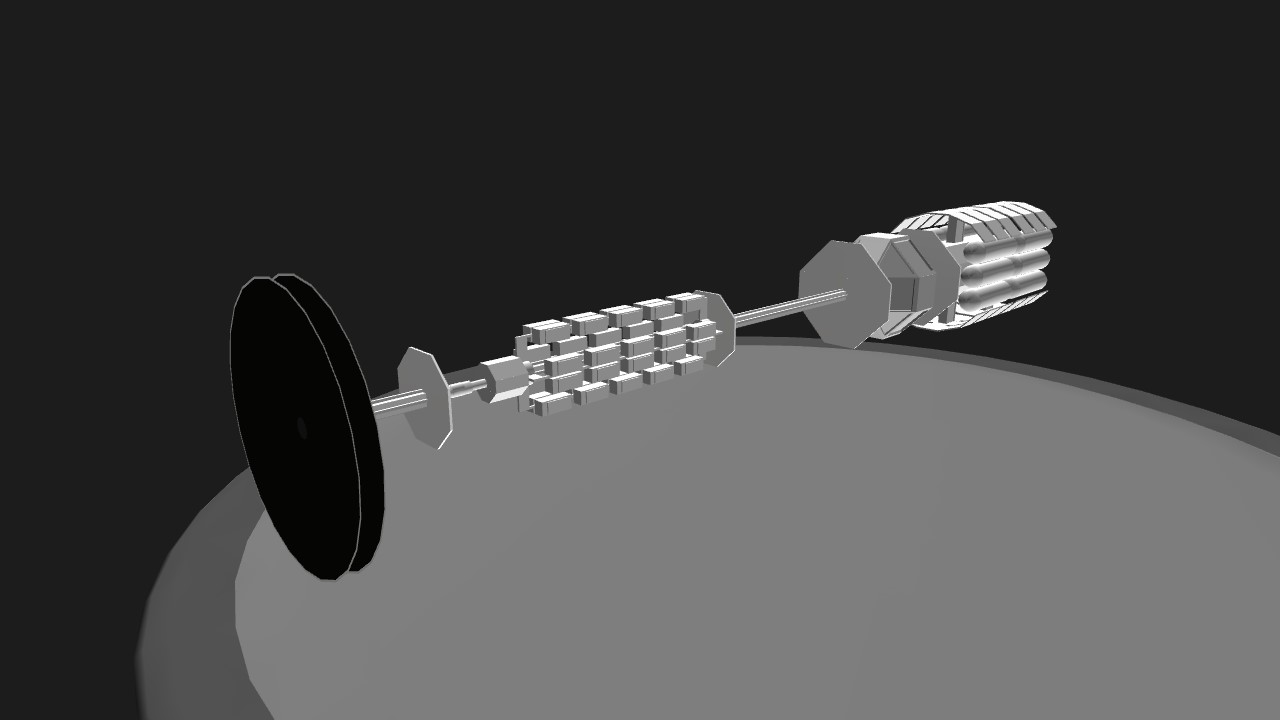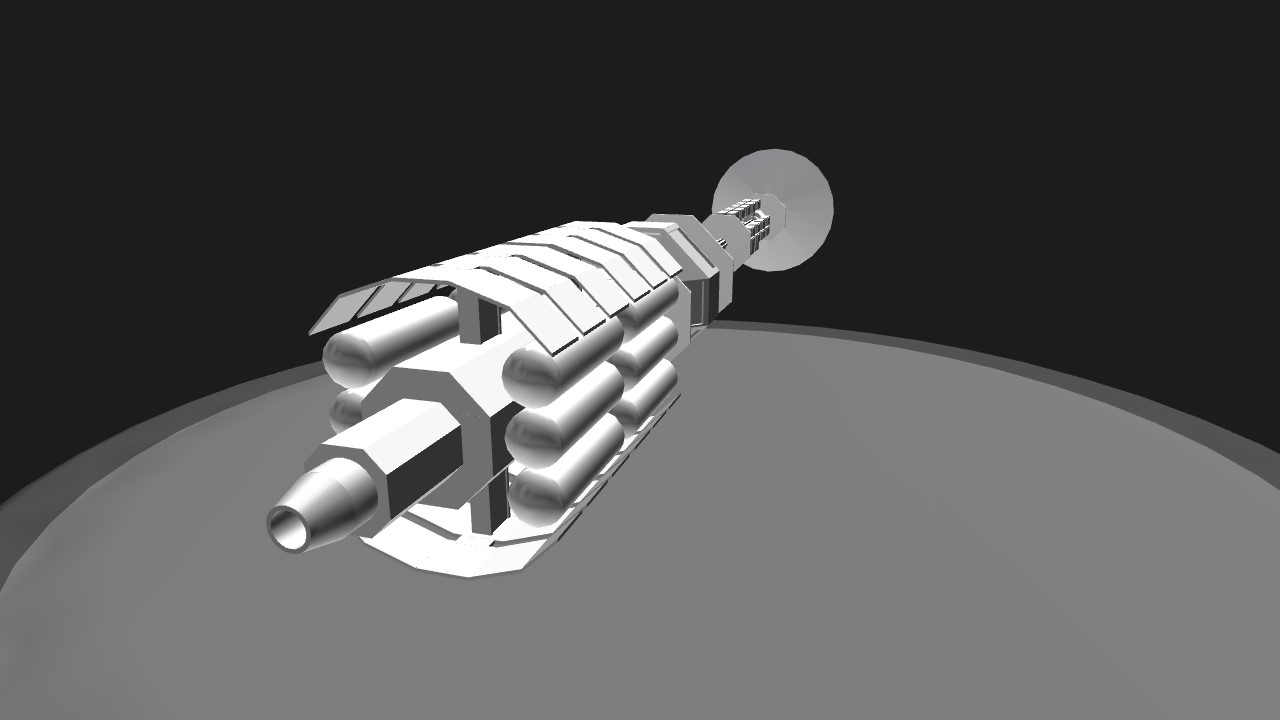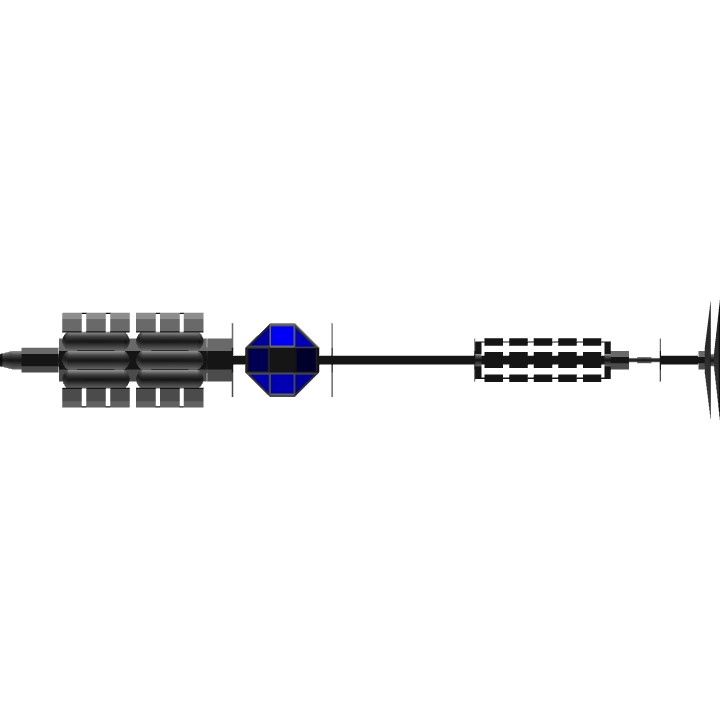My entry for the Cargo Challenge! Set in the same future universe as my USS Ad Astra. Remember: This ship is being built with a high degree of scientific realism!
Year, 2100: While the United States and the Republic of China toil away their resources building warships and orbital defences, the nation of South Korea stands out as one of the the solar system’s neutral economic superpowers, nearly to the point of monopolizing the intrastellar shipping industry. They have profited hundreds of trillions of dollar from exports out of their strip mining platforms orbiting Venus, as well as their permanent mining platforms in the asteroid belt and some of Jupiter’s moons.
Of course, those resources need to be transported, and the ROK Hae-nim is the means to that end. A brilliant standard of South Korean engineering, the Hae-nim is fuel efficient, features vastly more advanced technology than most contemporary starships, and most importantly, is faster than the lumbering American warships that are built using the resources it provides.
The ROK Hae-nim is just under 1.2 kilometers long, and in terms of overview, is similar to the Ad Astra Warship. Following is a review of all the ship’s components from back to front.
Propulsion Block:
Largest part of the ship. Acceleration/deceleration is controlled by a single extremely powerful two stage fusion-antimatter engine. On the sides of the engine body are 12 hydrogen fuel pods. The 12 circular panels on the top and bottom are heat syncs (as the engine is very power, it generates more heat).
Antimatter Fuel Sphere:
The polygonal shape (technically called a rhombicuboctahedron) in front of the propulsion block is an antimatter storage container. Advances in electromagnetic fielding technology have allowed South Korean ships to store much more condensed antimatter than ships of other nations. In the front and back of the fuel sphere are meter-thick heat/radiation shields.
Central Truss:
Tensile truss connecting the Cargo Block and the fuel and propulsion sections. Puts distance between the cargo and engine, which emits large amounts of radiation.
Cargo Block:
The most important part of the ship. A skeletal superstructure holds up to 40 cargo containers. This is my most speculative part of the ship: normally, as it is the second most vulnerable part of the ship, the cargo would be in minimal containers attached close to the hull. However, as ROK transport ships are in no danger of being fired on by sovereign forces, and I cannot foresee piracy being an issue, the cargo can be more dispersed.
Each cargo container is identical, pressurized,and with a full suite of environmental controls. While most material being shipped would be unrefined ore, ROK Hae-nim Transports headed to the front lines of intrastellar conflict might contain weapons, fuel, or even fighter craft. The other valuable resource that might be shipped is frozen water (on a polluted Earth, clean fresh water would be relatively rare). The ship itself has no mechanisms in place for loading/unloading containers, as that would be done by automated tugs or industrial unloaders at the various orbital strip mining stations or refineries.
Central Core:
The control hub of the ship; it is the octagonal section directly preceding the Cargo Block. In order to maximize efficiency, all ROK ships are manned only by a skeleton crew (usually 3 - 6 people). The central core contains habitation, but also the powerful computers that control flight telemetry and most other automated processes. Also contained within core is the full extent of the ship’s sensor and communication arrays.
Debris Shields/Bussard Ramjet Scoop:
The to large, flat circular sections in the very front of the ship are physical debris shields, which protect the ship from collisions with microscopic particles in flight. The frontal shield also doubles as a Bussard Ramjet, scooping up any spacial hydrogen and diverting it to the fuel tanks on the engine block to be used as fuel.
Offensive/Defensive Capabilities:
Other than standard electromagnetic fielding for deflection of particles while traveling, there are no designated defensive or offensive structures. As this is a cargo ship, weight in armor is also kept to an absolute minimum, in order to decrease the force needed to accelerate.
Specifications
Spotlights
- SimpleFlow 8.5 years ago
General Characteristics
- Predecessor CARGO CHALLENGE
- Created On iOS
- Wingspan 8.2ft (2.5m)
- Length 48.0ft (14.6m)
- Height 8.2ft (2.5m)
- Empty Weight 5,943lbs (2,695kg)
- Loaded Weight 5,943lbs (2,695kg)
Performance
- Wing Loading 439,839.3lbs/ft2 (2,147,483.6kg/m2)
- Wing Area 0.0ft2 (0.0m2)
- Drag Points 8643
Parts
- Number of Parts 331
- Control Surfaces 0
- Performance Cost 834






@KHH it does
대한민국!!
@SimpleThings Okaaay X3
Looks like the inside of a jet engine
@YuukaNeko
No ur awesome!
@Supercraft888 <3 You're awesome
@YuukaNeko by the way. That new tank which I has anticipated. It's out now.
@YuukaNeko u don't? I can teach!
@YuukaNeko
This is very awesome! Like the realistic design of this aircraft!
@SimpleFlow Everyone knows I have literally no idea how to make flying things X3
@YuukaNeko
Hey could you make this thing fly?
With VTOL capabilities?
That would be really cool
@SimpleFlow Awee, thanks <3 It's definitely not pretty, but if I could teach you anything about how spaceships really work, then I'm satisfied ^^
This is actually pretty nice!